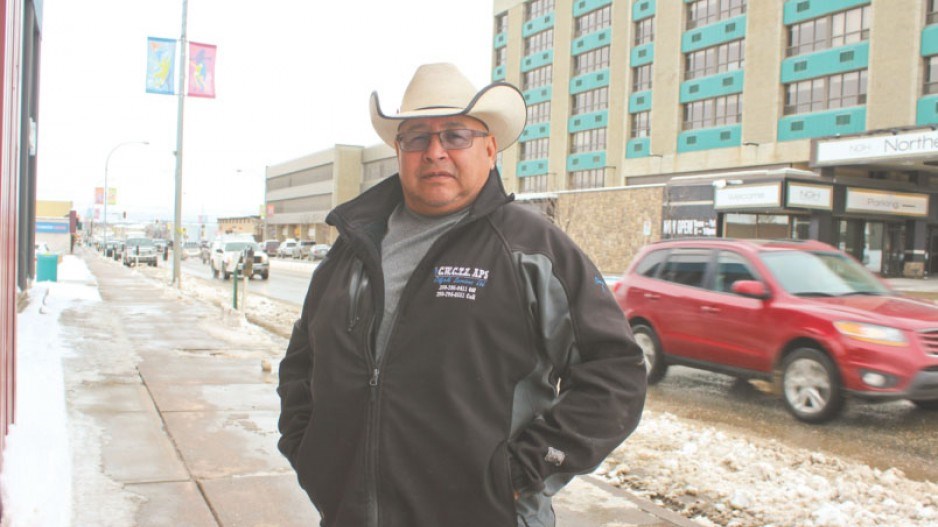For some First Nations people in Northeast B.C., liquefied natural gas means jobs and opportunity.
For others, it means a threat to lands, animals and traditional food sources hammered by decades of oil and gas development.
The federal government’s decision last month to approve Pacific NorthWest LNG, the Petronas-led proposal to ship super-cooled natural gas from B.C. to Asia, highlighted those disagreements among coastal First Nations near the proposed terminal on Lelu Island.
If Petronas decides to build the plant, there would be a ramp-up in drilling in the opposite corner of the province, on the territories of Indigenous groups that have already seen their traditional lands and ways of life transformed by steadily increasing oil and gas production.
Some Northeast B.C. First Nations are critical of the project and the 900-kilometre pipeline that would carry gas to the coast. Others welcome the potential jobs, while others are still figuring out what LNG would mean for their communities.
Progress Energy, upstream subsidiary of Pacific NorthWest LNG, has drilled hundreds of wells in the region to prove gas reserves for the project. According to an analysis by the Canadian Association of Petroleum Producers, the company would need to drill around around 200 more wells per year to meet production targets.
“We’ll see a lot of areas that have already been heavily hit hit even harder with more wells, more roads, more access, more water usage—all the things that go along with fracking,” said Saulteau First Nations Chief Nathan Parenteau.
For some First Nations people in Northeast B.C., liquefied natural gas means jobs and opportunity.
For others, it means a threat to lands, animals and traditional food sources hammered by decades of oil and gas development.
The federal government’s decision last month to approve Pacific NorthWest LNG, the Petronas-led proposal to ship super-cooled natural gas from B.C. to Asia, highlighted those disagreements among coastal First Nations near the proposed terminal on Lelu Island.
If Petronas decides to build the plant, there would be a ramp-up in drilling in the opposite corner of the province, on the territories of Indigenous groups that have already seen their traditional lands and ways of life transformed by steadily increasing oil and gas production.
Some Northeast B.C. First Nations are critical of the project and the 900-kilometre pipeline that would carry gas to the coast. Others welcome the potential jobs, while others are still figuring out what LNG would mean for their communities.
Progress Energy, upstream subsidiary of Pacific NorthWest LNG, has drilled hundreds of wells in the region to prove gas reserves for the project. According to an analysis by the Canadian Association of Petroleum Producers, the company would need to drill around around 200 more wells per year to meet production targets.
“We’ll see a lot of areas that have already been heavily hit hit even harder with more wells, more roads, more access, more water usage—all the things that go along with fracking,” said Saulteau First Nations Chief Nathan Parenteau.
Parenteau said the nation opposes the current pipeline route, which crosses the Moberly River more than a dozen times.
“We’re against bad mitigation measures around the pipelines and the project," he said. "We had to oppose (the pipeline) because of its current route.”
As for the potential jobs: “there would be temporary jobs, a few months long, then that’s it. And we’re left with all the possible repercussions from a spill or a leak or other environmental damages.”
He said pipeline and other oil and gas developments have opened up the backcountry, making it easy for wolves to decimate caribou and moose populations—part of the reason the provincial government has begun a wolf cull in the South Peace. There are also social impacts. Human rights group Amnesty International, for example, is in the midst of an investigation into resource development and missing and murdered Indigenous women in Northeast B.C.
Benefits agreements
According to the First Nations LNG Alliance, 16 of 19 First Nations along the pipeline route have reached benefits agreements with the province, including the Doig River and Halfway Rivers First Nations and the McLeod Lake Indian Band.
TransCanada, meanwhile, has reached agreements with those nations, as well as Blueberry River.
On the coast, Pacific NorthWest LNG has facilities agreements with just two of six eligible First Nations, according to the alliance.
The Lax Kw’alaams, which initially voted to oppose the project, later approved an agreement in a referendum this summer.
Messages with Fort Nelson, West Moberly, Halfway River and Doig River First Nations were not returned by press time.




